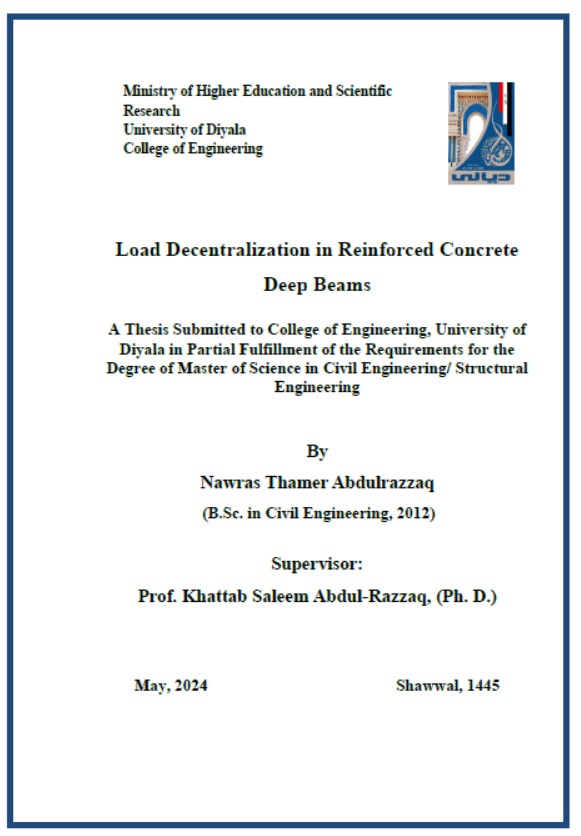ABSTRACT
It is known that stresses are transmitted in straight lines from load points to support points in deep beams. These stress lines are called struts, which meet with tension ties at nodes, forming a Strut and Tie Modelling (STM). The paths of these compressive stresses are symmetrical if the load is concentrated in the middle of the beam span, that is, the STM method, which is adopted in most international design codes such as ACI 318-19, can be used. However, if the load is not centred in the beam span, these struts are asymmetrical, which makes them a topic worthy of research.
Accordingly, twelve deep reinforced concrete beam specimens were cast and tested, divided into three groups using monotonic static loading. The length of the specimen was 1500 mm, its height was 500 mm, and its cross-sectional width was 125 mm. The three groups were divided according to the type of load. In the first group, it was a single concentrated load, in the second group it was two concentrated loads, while in the third group, the load consisted of two unequal concentrated loads. In each group, the first specimen was a traditional reference deep beam exposed to a central load, while the second specimen was also a traditional deep beam but exposed to a non-central load. The third specimen was a frame that represented STM stress paths only, and finally the fourth specimen in each group represented a proposed frame.
Laboratory results showed that moving the single central load over a distance of one-quarter of the beam span leads to a decrease in the load capacity and deflection by about 34% and 41%, respectively. In the case of two single concentrated loads, their movement to the quarter of the beam span leads to a decrease in load capacity and deflection by about 25% and 38%, respectively. The reason for this is due to premature failure of the shorter strut. In the third group, two central loads of different values were applied. The first load represented one-third of the load value, while the second load represented two-thirds of the load value. The strut, which falls under the greater load, failed. When these two loads are moved a distance of a quarter of the beam span, so that the smaller load is the one closer to the support, the load capacity and deflection decrease by 47% and 14% for the same reason above.
It is worth noting that when the stress paths of the STM were cast only in order to study their behavior abstractly, it was found that the resulting frames had a laboratory load capacity lower than the reference traditional beams, but they remained superior to the theoretical STM load capacity. That made those frames acceptable alternatives to traditional reference beams, especially since they are less weight and cost by about 45%-54% and 4%, respectively, while providing service openings amounting to 46-47%.
Finally, it must be mentioned that the STM, despite its conservativeness, simplicity of use, and high safety factor, its failure contradicts laboratory failure. Theoretically, a longer strut fails, while in a laboratory, a shorter strut fails.




